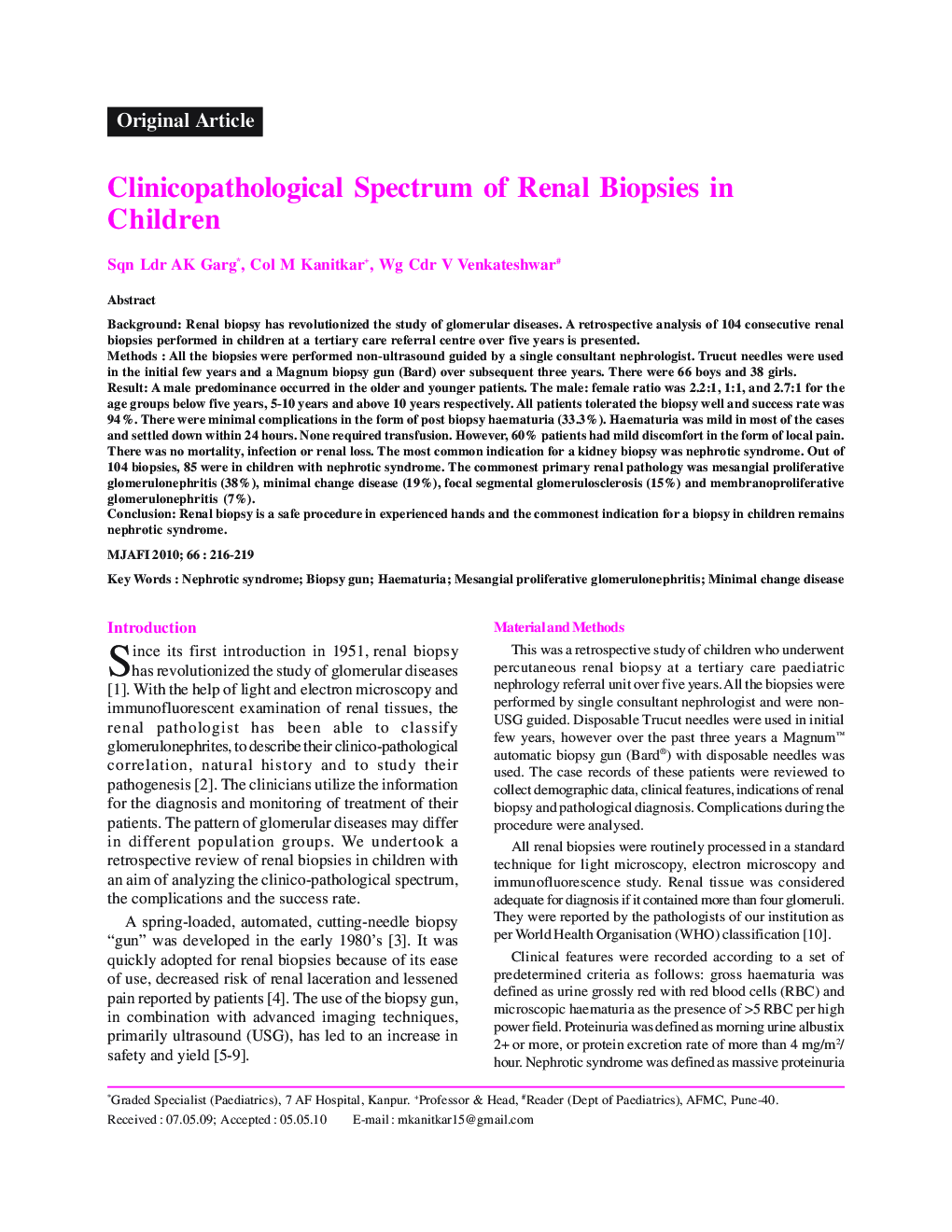| Article ID | Journal | Published Year | Pages | File Type |
|---|---|---|---|---|
| 3161803 | Medical Journal Armed Forces India | 2010 | 4 Pages |
BackgroundRenal biopsy has revolutionized the study of glomerular diseases. A retrospective analysis of 104 consecutive renal biopsies performed in children at a tertiary care referral centre over five years is presented.MethodsAll the biopsies were performed non-ultrasound guided by a single consultant nephrologist. Trucut needles were used in the initial few years and a Magnum biopsy gun (Bard) over subsequent three years. There were 66 boys and 38 girls.ResultA male predominance occurred in the older and younger patients. The male: female ratio was 2.2:1, 1:1, and 2.7:1 for the age groups below five years, 5–10 years and above 10 years respectively. All patients tolerated the biopsy well and success rate was 94%. There were minimal complications in the form of post biopsy haematuria (33.3%). Haematuria was mild in most of the cases and settled down within 24 hours. None required transfusion. However, 60% patients had mild discomfort in the form of local pain. There was no mortality, infection or renal loss. The most common indication for a kidney biopsy was nephrotic syndrome. Out of 104 biopsies, 85 were in children with nephrotic syndrome. The commonest primary renal pathology was mesangial proliferative glomerulonephritis (38%), minimal change disease (19%), focal segmental glomerulosclerosis (15%) and membranoproliferative glomerulonephritis (7%).ConclusionRenal biopsy is a safe procedure in experienced hands and the commonest indication for a biopsy in children remains nephrotic syndrome.
